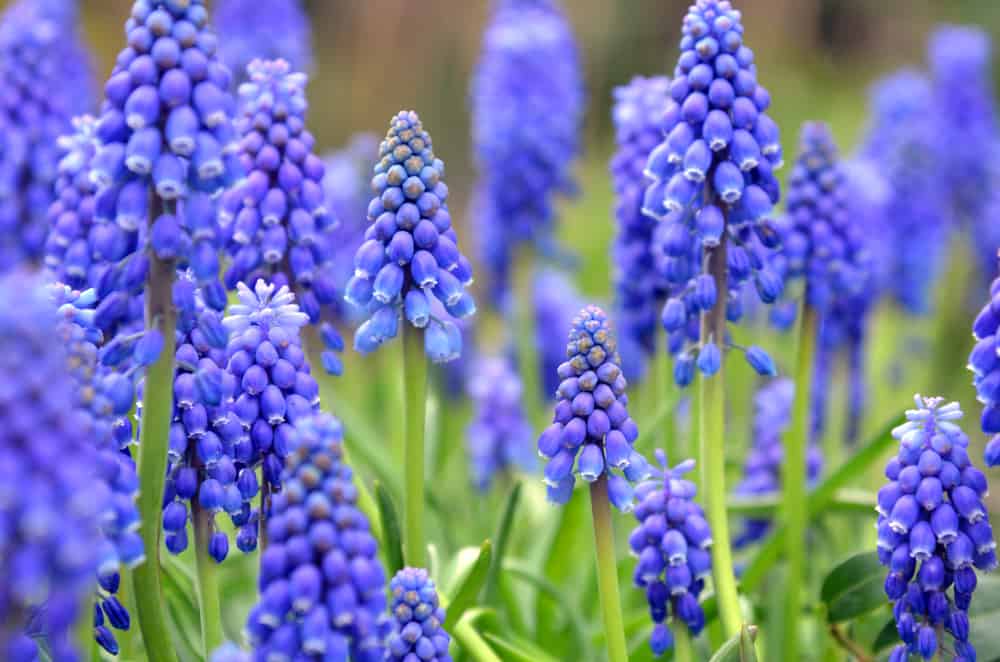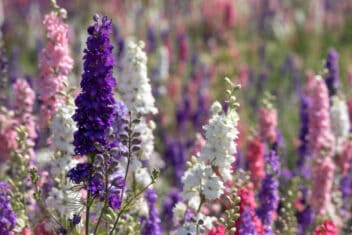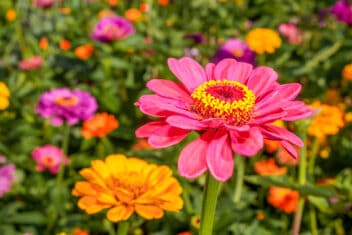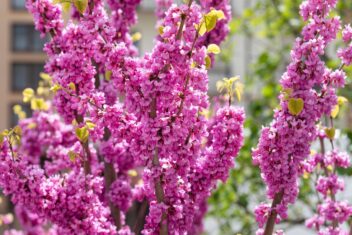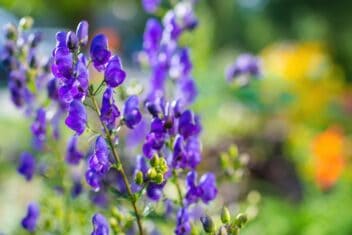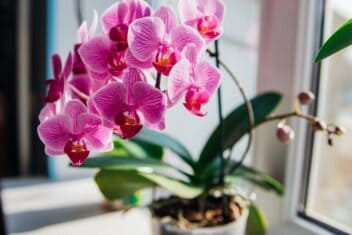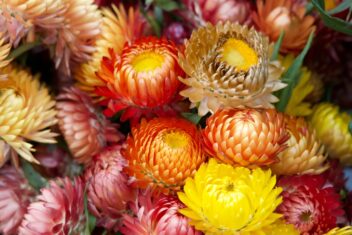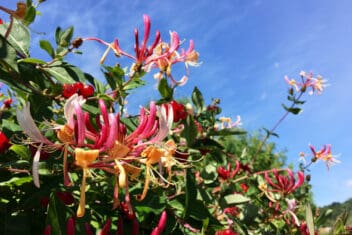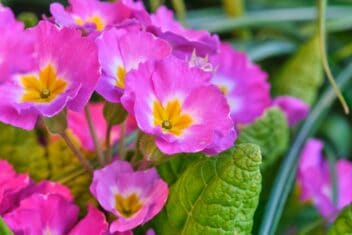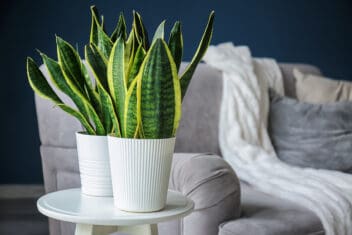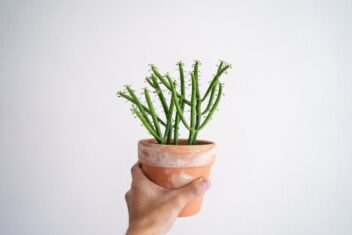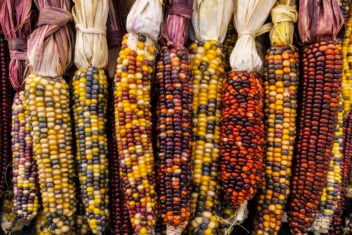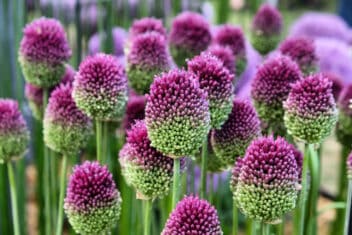Although this little plant has a short blooming period, grape hyacinth makes a big impact in the garden. Available in multiple colors, it creates texture and color that stands out from other plants in the garden.
Grape hyacinths are maintenance-free once planted and provided with some basic necessities.
They’re perfect for mass planting in an area where you don’t mind them spreading, and they also look great in containers where they will happily add color to decks and outdoor seating areas.
If you want to try this colorful flower, let’s talk grape hyacinth.
What is Grape Hyacinth?
Grape hyacinth (Muscari spp.) is a spring-flowering perennial bulb that flowers early and suits many conditions in the garden or containers.
It is native to Eurasia but some species have naturalized in other parts of the world. The genus name is Greek, referring to the musk-scented flowers that explode in early spring.
Despite the name, grape hyacinth isn’t a hyacinth, but is part of the lily family (Liliaceae). The word grape refers to the cluster of pretty bell-shaped flowers that resemble an upside-down bunch of grapes.
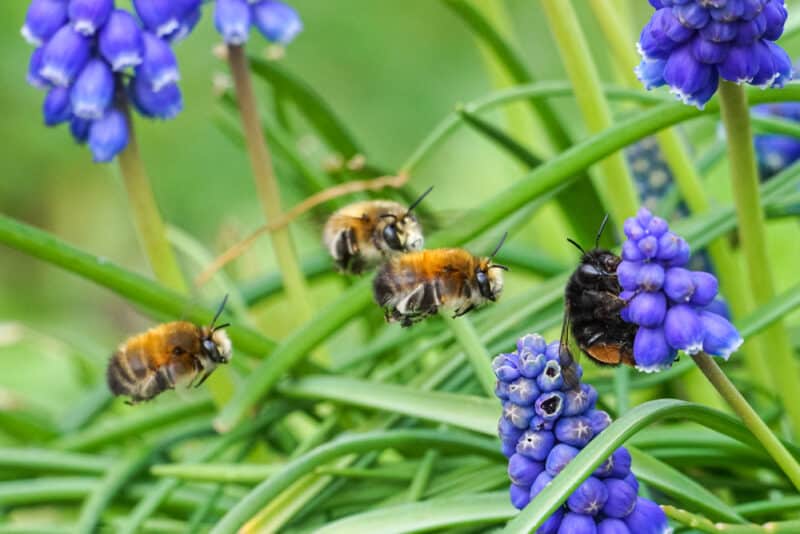
The leaves will appear first in early spring before the flowers follow. The foliage dies off in early summer after flowering. A bonus of grape hyacinth is that some will grow again in mid-fall. If you live in an area with mild winters, you could be lucky and have a second round of grape hyacinth color.
The flowers are four to eight inches tall, with an average three stalks per bulb. Each stalk has around 20 to 40 flowers tightly packed. Some cultivars might be much taller or even a bit smaller.
Generally, these plants grow in USDA Hardiness Zones 4 to 8.
5 of the Best Species of Grape Hyacinth
It’s worth noting that many garden centers sell grape hyacinth under the common name “grape hyacinth” rather than defining the species. It is essential to know the species for propagation, though.
When you shop for grape hyacinth, you will see just how many varieties and cultivars there are. Here are some favorites, but if you can’t find them, you will probably find some that you love at your local nursery.
Armenian Grape Hyacinth
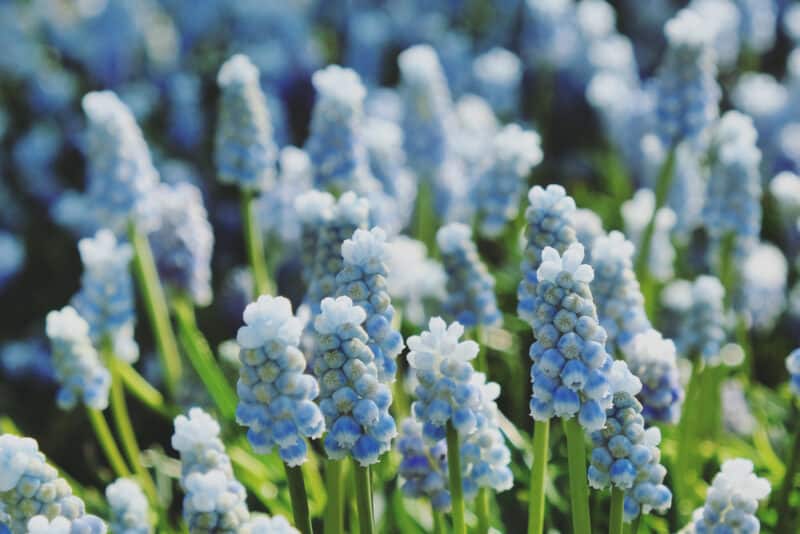
Armenian grape hyacinth (M. armeniacum) is indigenous to Europe but has naturalized across North America. You will often find them in meadows and woodlands. Plant these in pots or mass planting situations. They will produce daughter bulbs.
‘Peppermint’s’ blooms are initially white before turning a light blue flower with white tips. ‘Peppermint’ is a vigorous grower and a reliable bloomer. In mass planting situations, the white tips give a snowy or icy look.
‘Blue Spike’ is an unusual-looking grape hyacinth because it is double-flowered, making it look much bigger than others. The blooms are a darker blue than the peppermint.
‘Siberian Tiger’ has pure white flowers that create a carpet of brilliant whiteness. Seeing is believing just how bright white the blooms are.
Common Grape Hyacinth
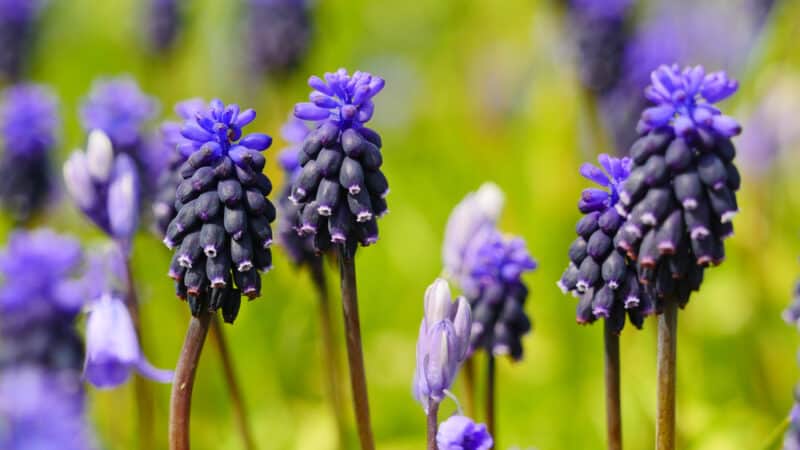
Ideal for warmer areas, common grape hyacinth (M. neglectum) produces daughter bulbs and can readily form clumps that return year after year.
Mix sky-blue with delicate grey, and you have ‘Baby’s Breath.’ This cultivar is easy to grow and prolific.
The blooms on ‘Valerie Finnis’ start out a light shade of blue. As the season goes on, the blue becomes much more vivid. Lovely for gardeners who like to see changes in color as the seasons mature.
Broad-leaved Grape Hyacinth
Have a sunny to semi-shady spot? Broad-leaved grape hyacinths (M. latifolum) are perfect. They are the most vigorous species and grow up to 10 inches tall.
If you love contrasting colors, try ‘Grape Ice.’ The blooms start out as white and turn to very dark purple as they mature. Seeing the contrast between the white and purple flowers as they change is a great look for the garden.
Compact Grape Hyacinth
Full sun to partial shade areas will make this grape hyacinth (M. botryoides) happy. Unlike other species, it reproduces by self-seeding, not by daughter bulbs.
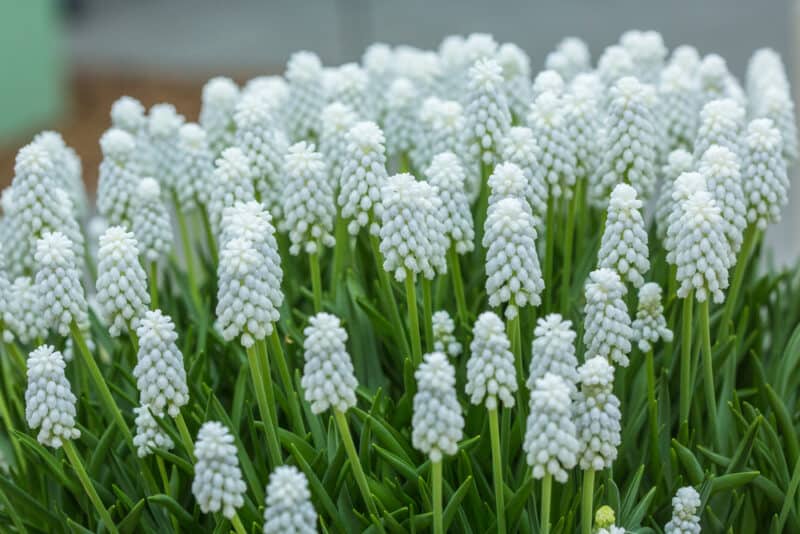
‘Album’ blooms pure white for the entire season. This grape hyacinth is perfect for planting with other brighter ones. It is one of the more popular white varieties, but as a self-seeder, it can take over an area quickly.
‘Superstar’ is corn-flower blue and each of the individual flowers has a delicate white ring.
Aucher-Eloy Grape Hyacinth
Sunny conditions are required for this species (M. aucheril), though, like most grape hyacinths, they are forgiving of partial shade.
‘White Magic’ blooms start pale yellow before turning white with yellow tips.
‘Ocean Magic’ is a beautiful flower. The buds are green when closed, but as they open, you’ll see white tips, light blue in the middle, with a sprinkling of dark blue to purplish hues.
Propagating Grape Hyacinth
This is a simple process that can be used all grape hyacinths that produce daughter bulbs. Divide them in summer when they’re dormant. Dig up the clump and split them gently with your hands to form smaller clusters.
Replant them and wait until next spring.
For those that produce seeds rather than bulbs, save the seeds and replant them in spring.
- Remove the dry pods and take the seeds out. They should be dry in spring after the plant has finished blooming.
- Place the seeds on a damp paper towel and place this in a plastic bag that is only partially sealed.
- Put this in the refrigerator until they sprout. This usually takes a couple of months.
- Plant in pots until they are big enough to be planted into bigger pots or planted outside.
Fall is the time to plant grape hyacinth bulbs for that flush of spring blooming and color.
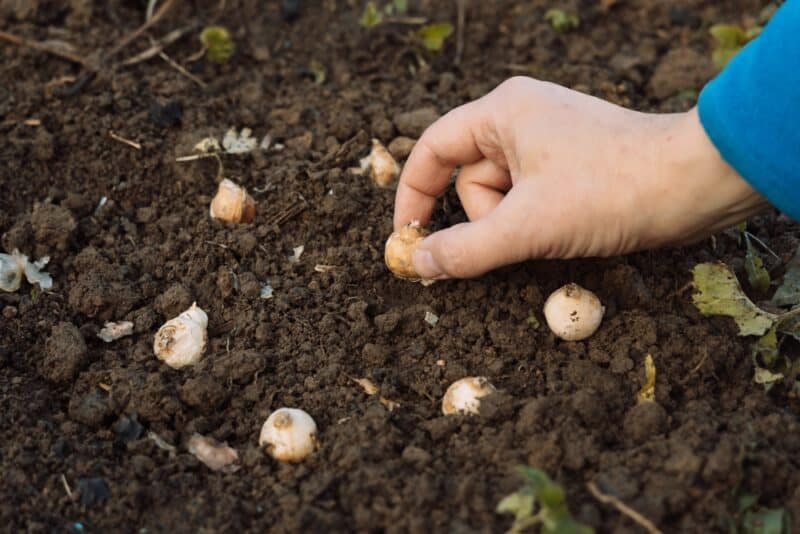
These are small bulbs, so if you have a small garden or area where you want mass color, plant about 25 to 30 bulbs. Larger areas, you can plant as many as you want, as long as the bulbs are at least three inches apart. Plant about three inches deep.
Water at planting, then water the soil only when it starts to dry out.
How to Care for Grape Hyacinth
Choose a site in full sun because this is where grape hyacinth does best. Partial shade is okay, as well, but you might not get the same growth and color that you would otherwise. Some species are more tolerant of poor light than others.
Soil type isn’t a problem as long as it’s not waterlogged or soggy. Make sure the soil drains well, and don’t worry about pH.
Planted in the appropriate Zone, grape hyacinths are reliable year after year. Like many spring bulbs, they do need a cold winter period, called vernalization, to bloom the following spring. If you have a warmer-than-usual winter, this may cause some bloom failure.
You generally don’t need to fertilize grape hyacinth. Sprinkle the soil with bone meal when you first plant. If they look like they are struggling, sprinkle more bone meal and water it in well.
Growing in Containers
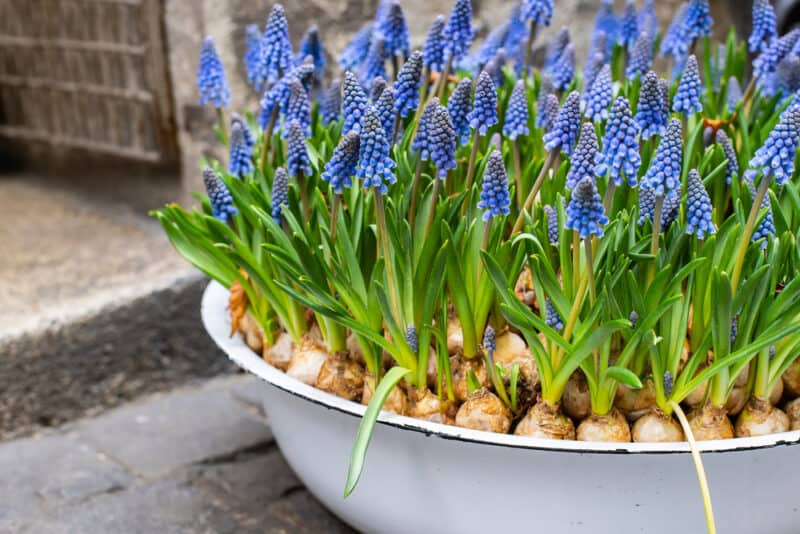
As the bulbs and plant are small, grape hyacinth suit containers well. Plant the bulbs in fall three to four inches deep. Choose a container that allows for spacing of about three to four inches apart.
The container must be well-draining as the bulbs will rot if left in a growing medium that is soaking.
Keep the container in a warm and sunny to partially sunny area. In early spring, move them to a sunny position and don’t allow the soil to dry out for too long, but don’t water until the top inch of the soil is dry.
Companion Planting for Grape Hyacinth
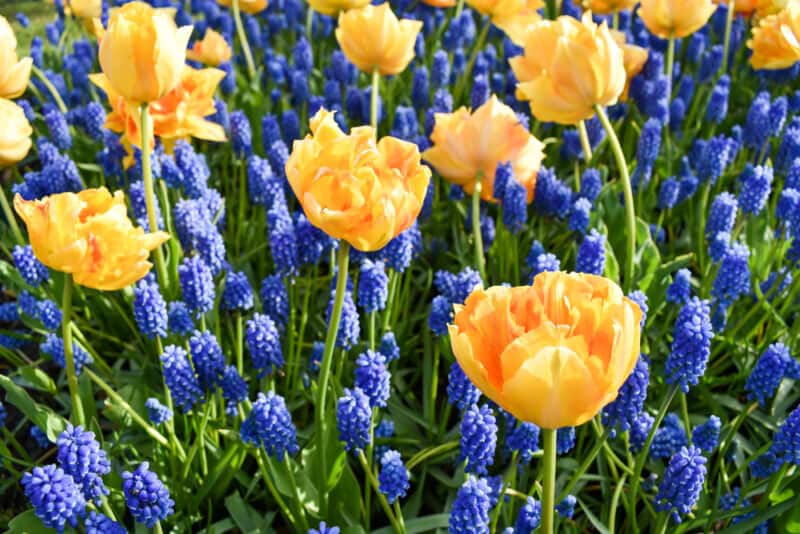
In gardens or borders, plant with:
When planting under trees and shrubs for mass color, choose early-blooming ones like:
Potential Problems When Growing Grape Hyacinth
Few pests and diseases bother grape hyacinth. Use slug and snail control method, such as pellets, if you have trouble with the young plants being eaten.
Aphids and spider mites are sometimes a problem. Use neem oil if you need to, but make sure it is later in the day when the pollinators have come and gone. These pests can usually be controlled by spraying them off with a steady stream of water once a week.
Yellow mosaic virus is sometimes a problem. The foliage becomes mottled with yellow or light green spots and streaks. The plant will be visibly struggling. There is no cure for this virus, but it is usually spread by aphids, so control them as best as possible.
These are the more common physiological issues you will face:
1. Yellow Leaves
This is usually an issue caused by over-watering rather than drought. Allow the soil and plant to dry out. Water again only when the top inch of soil is dry.
2. Leaves Droop
Although grape hyacinth can tolerate partial shade, too much will likely cause the leaves to droop. Sufficient sunshine is necessary for this plant, so give it full sun if you can. The good news is you can dig the bulbs up when dormant and replant them in a sunnier position.
3. Leaves Falling Off
This is likely to be the normal cycle of grape hyacinth. The leaves always die back after the spring flowering is complete. If you think it looks messy, remove the dead foliage gently.
